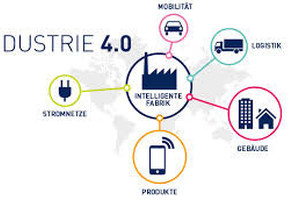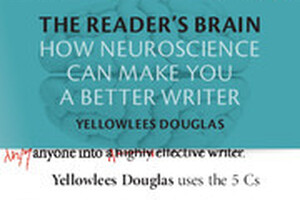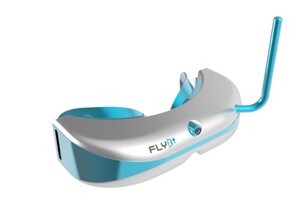Editor Due
U-Boote – Untersee-Kriegsführung der Zukunft
Anfang Februar trafen sich im Office of Naval Research in Virginia zur zweijährlichen Versammlung der Spitzenforscher der US-Marine. Die Gruppe hatte sich versammelt, um innovative Technologien zu besprechen, welche die Navy einsetzen könnte.
- 15.10.2015, 14:44 von Editor Due
- 0 Kommentare
- 9.971 Aufrufe
Blickpunkt - Intelligent genutzte Mobilität
Wie werden wir uns in Zukunft fortbewegen? Die Konferenz «Mobilität 2025» präsentierte eine Studie, die das Gottlieb-Duttweiler-Institut bei den SBB in Auftrag gegeben hatte. Experten und Querdenker zeigten Mobilitäts-Perspektiven und -Grenzen auf.
- 13.10.2015, 22:32 von Editor Due
- 0 Kommentare
- 1.899 Aufrufe
3D printing – five ways to changing the world
The recent hype over 3D printing, also known as additive manufacturing, shoudln’t fool you into thinking it's new. This process – which consists of printing layer upon layer of a material, usually plastic, to make an object out of a 3D digital drawing – has been around since the eighties.
- 13.10.2015, 22:05 von Editor Due
- 0 Kommentare
- 10.928 Aufrufe
Aus Vision wird (langsam) Realität - Industrie 4.0
Die Schweizer Industrie ist auf einem guten Weg zur vernetzten Wirtschaft. So beschäftigen sich knapp zwei von drei Firmen bereits mit der intelligenten Fabrik – oftmals im Beobachtungs- und Analysestadium, aber auch in Einzelprojekten. Das ist das Ergebnis einer länderübergreifenden Studie der Unternehmensberatung Staufen AG.
- 12.10.2015, 22:04 von Editor Due
- 0 Kommentare
- 10.665 Aufrufe
Intelligenz und Kleidung - fünf Trends
Hightech-Textilien sind dabei sich zu etablieren. Kein Wunder also, wenn die Zukunft intelligenter Textilien von der Klimaregulierung über den Kampf gegen Schmerzen bis hin zu Naturmaterialien reicht.
- 12.10.2015, 21:32 von Editor Due
- 0 Kommentare
- 10.058 Aufrufe
Zukünftiges IT-Material: Ultradünnes Glas
Es ist dünner als unser Haar und soll die Datenübertragunf beschleunigen. Im Schott Key Technology Center schneidet ein blauer Spezial-Laser Aussparungen in eine biegsame, ultradünne Glasscheibe. Der Mainzer Spezialglas-Hersteller Schott treibt die Entwicklung von Glas voran, das dünner ist als ein menschliches Haar. Solche Spezialgläser versprechen mehr Tempo bei der Übertragung von Daten.
- 09.10.2015, 01:01 von Editor Due
- 0 Kommentare
- 10.387 Aufrufe
Datacenter 2025
Die Rechenzentrumsexperten gehen davon aus, dass die Cloud-Nutzung weiter wachsen wird und bis zum Jahr 2025 rund zwei Drittel der Rechenzentrumsleistungen in der Cloud stattfinden werden.
- 09.10.2015, 00:41 von Editor Due
- 0 Kommentare
- 2.903 Aufrufe
Drones and driverless tractors in the future of farming
With more than half of the British countryside being managed by precision farming methods, is the new agricultural revolution gathering pace?
- 09.10.2015, 00:07 von Editor Due
- 0 Kommentare
- 14.741 Aufrufe
Coole Bikes - Design and Inovation
The world is spinning faster than ever before! As manufacturers proclaim new, apparently game-changing products and bikers marvel at them thinking “WOW – surely more isn’t possible,” the engineers carry on refining. The (mostly) healthy competitiveness between global giants and local workshops ensures continuous product improvement and innovation, which is sometimes meaningful and sometimes just pure marketing hype.
- 08.10.2015, 23:42 von Editor Due
- 0 Kommentare
- 10.565 Aufrufe
The World of Cyberattacks
Every month, it seems, a mammoth cyberattack sponsored by a nation-state comes to light. In recent years, more than 20 countries have announced their intent to launch or beef up their offensive cyber capabilities. The result is a burgeoning digital arms race that presents a major threat to the security of our data.
- 06.10.2015, 18:31 von Editor Due
- 0 Kommentare
- 10.442 Aufrufe
Europol and INTERPOL - Pro-Active Policing of Cyberspace
The need to strengthen cross-border cooperation in investigation, information exchange and capacity-building in the face of the growing professionalisation of cybercrime will be a key area for discussion during the 3rd Europol – INTERPOL Cybercrime Conference.
- 06.10.2015, 18:13 von Editor Due
- 0 Kommentare
- 1.818 Aufrufe
Cybercrime and Cyberwar and Cybersecurity
Cybercrime poses a potential existential threat to our society, and we're completely unprepared. Whether or not Chris Roberts, the security researcher who recently claimed to have hacked into the flight control system of a plane while it was in flight, was telling the truth about his ability to hijack a plane, we've most definitely entered the era of cybercrime.
- 06.10.2015, 17:58 von Editor Due
- 0 Kommentare
- 10.558 Aufrufe
Japan - Self-driving cars on the Olympic Games 2020
Speaking at an international conference on science and technology in Kyoto, Abe pledged Japan would contribute to innovations in driving technology.
- 06.10.2015, 17:37 von Editor Due
- 0 Kommentare
- 2.744 Aufrufe
“Blindsight” or the strangest form of consciousness
Some people who have lost their vision find a “second sight” taking over their eyes – an uncanny, subconscious sense that sheds light into the hidden depths of the human mind. When Daniel first walked into London’s National Hospital, ophthalmologist Michael Sanders could have had little idea that he would permanently alter our view of human consciousness.
- 05.10.2015, 23:38 von Editor Due
- 0 Kommentare
- 11.603 Aufrufe
The useful CO2 - Materials could it Capture
Novel molecular structures are a first step toward economical carbon capture at a wide scale. A viable technology for economical carbon capture would be a huge step in reducing greenhouse gas emissions.
- 05.10.2015, 22:20 von Editor Due
- 0 Kommentare
- 10.202 Aufrufe
Design craze - tiny homes in the future
With space at a premium and affordable housing scarce, some architects are thinking small when designing domestic space. Imagine a house in which – at the flick of a button – your bed descends from the ceiling, your dining table pops out from the floor panels, and your projector screen unfurls from the roof.
- 02.10.2015, 17:21 von Editor Due
- 0 Kommentare
- 1.785 Aufrufe
11 years searching for gravitational found nothing
Almost a hundred years since Albert Einstein proposed gravitational waves as part of his general theory of relatively, we are still no closer to finding them. Was Einstein wrong?
- 02.10.2015, 16:40 von Editor Due
- 0 Kommentare
- 11.210 Aufrufe
Futuristic biplane design break the sound barrier
A throwback to early 20th Century aviation may hold the key to eliminating the sonic boom - at least according to researchers at MIT and Stanford University. Strongly reminiscent of biplanes still in use today, the researcher's concept supersonic aircraft introduces a second wing which it is claimed cancels the shockwaves generated by objects near or beyond the sound barrier.
- 30.09.2015, 11:12 von Editor Due
- 0 Kommentare
- 1.233 Aufrufe
A Way to see earliest sings of Alzheimer
Liquid crystals are familiar to most of us as the somewhat humdrum stuff used to make computer displays and TVs. Even for scientists, it has not been easy to find other uses. Now a group of researchers is putting liquid crystals to work in a completely unexpected realm: as detectors for the protein fibers implicated in the development of neuro-degenerative diseases such as Alzheimer’s.
- 30.09.2015, 10:30 von Editor Due
- 0 Kommentare
- 1.873 Aufrufe
Neuroscience – Tips to improve your writing
“The Reader’s Brain: How Neuroscience Can Make You a Better Writer”: A new book uses insights into the reading brain to give writers clear-cut, science-based guidelines on how to write anything well, from an email to a multi-million-dollar proposal.
- 30.09.2015, 09:43 von Editor Due
- 0 Kommentare
- 9.933 Aufrufe
Electric surfboard - glove-controlled - takes wearable tech surfing
Born in the electric surfboard-crazed nation of Germany, the J-Force eBoard is one of the fastest electric-propelled boards on the market, reaching 34 mph (55 km/h) on the open water. In place of the usual handheld controller, the eBoard uses a wearable glove that puts speed control at your fingertips ... literally.
- 30.09.2015, 09:23 von Editor Due
- 0 Kommentare
- 352.903 Aufrufe
FLYBi – in the “cockpit” of drone
The crowdfunded drone explosion continues with the features VR-headset FLYBi, a wrist remote and automatic battery-swapping, quadcopter designed to put you in the "cockpit," sort of. It aims to fulfill the promise of earlier concepts like Oculus FPV that merge virtual reality tech with drones to provide a first-person view of the flight.
- 30.09.2015, 09:02 von Editor Due
- 0 Kommentare
- 11.312 Aufrufe
The future of Razor-Technology - shaves with lasers
Laser technology has come a long way over the decades, having made leaps from science fiction to science fact within the medical field, manufacturing, and even as a "death star" beam to help unlock the mysteries of the universe. But the latest laser-enabled concept is something the average consumer can more readily appreciate. The Skarp Razor may become the first-ever personal shaving tool powered by a laser.
- 30.09.2015, 08:40 von Editor Due
- 0 Kommentare
- 1.590 Aufrufe
Gel Touch Screen - Make Your Own Buttons
Researchers from Telekom Innovation Laboratories and TU Berlin in Germany and from the Aarhus University in Denmark covered a touch screen in gel that can harden into buttons of all shapes and sizes so you can use the display even if you can’t gaze at it.
- 25.09.2015, 23:55 von Editor Due
- 0 Kommentare
- 1.797 Aufrufe
Start in a new Era of Home Energy Storage
Driven by the explosion of residential solar power, the market for home energy storage—which attracted little interest until earlier this year, when Tesla announced its Powerwall battery—is suddenly looking crowded.
- 25.09.2015, 23:32 von Editor Due
- 0 Kommentare
- 3.954 Aufrufe

























